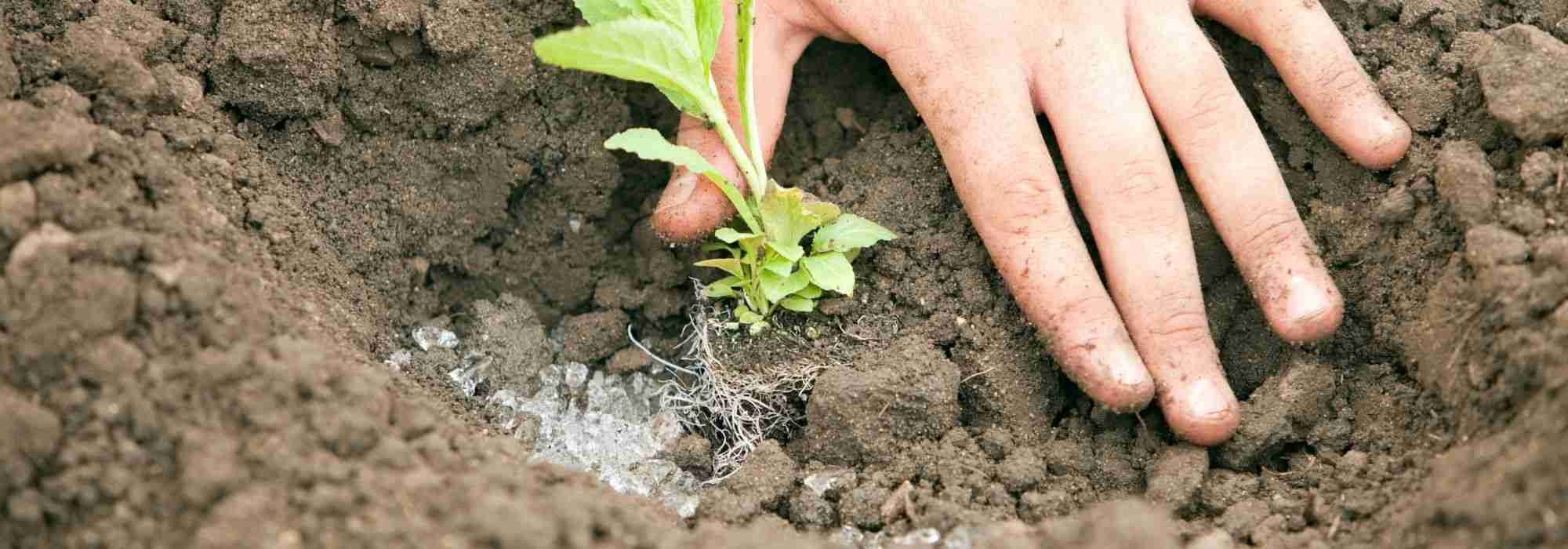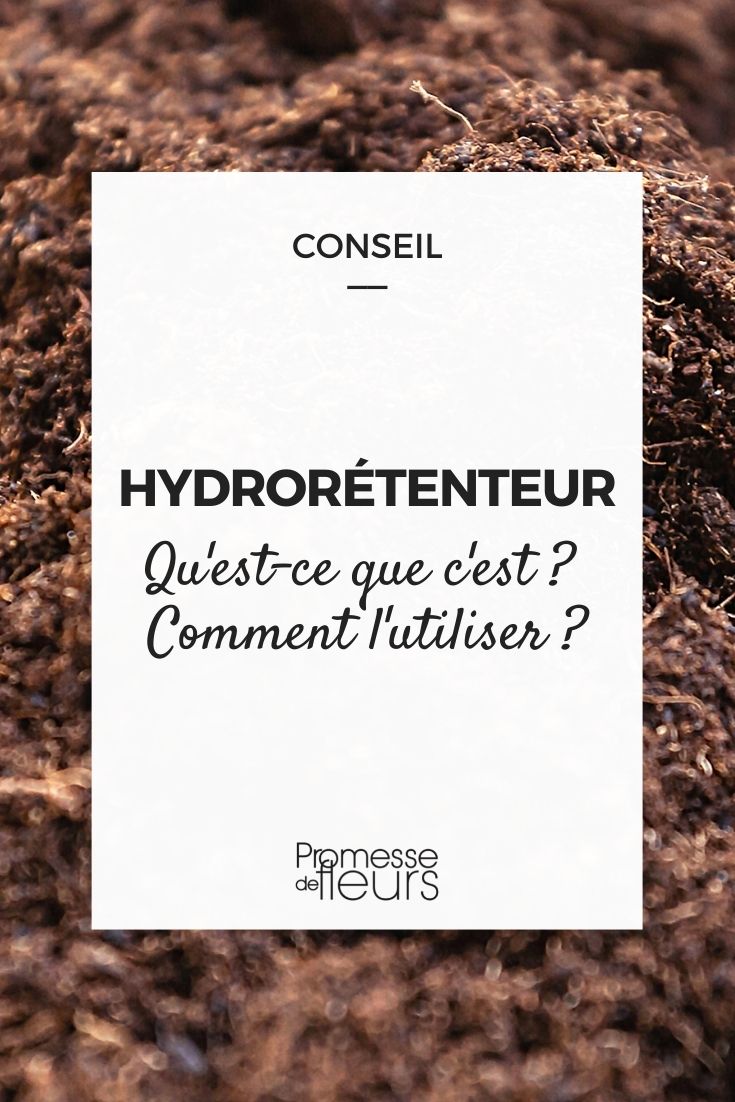
What is a water-retaining agent, what is it used for and how do you use it?
A very recent and innovative technology
Summary
Water is synonymous with life. But sadly, water, this blue gold, is becoming scarce across the world, even here. And without water, no plants. The problem is set. How to grow plants when water runs short? The water-retention agents or water retainer might provide a solution. A genuine revolution in agriculture, especially in arid areas, water-retaining polymers, or water beads, are now available to gardeners (Polyter, Stockosorb). But what are they and, above all, how to use these water beads or water crystals? Is it really a miracle solution? We tell you everything in this guide.
What is a water-retaining agent?
They are also called “water retainers”, “Water grain” or “Water crystal”. Water retainers with a semi-permeable polymeric membrane are small crystals made of acrylamide copolymer. These crystals are designed to swell with water or, in case products presented as a gel, to solidify water by the addition of potassium polyacrylate. They are therefore three-dimensional copolymers of the type: polyacrylamide/polyacrylates derived from petrochemistry.
Acrylamide forms when vegetable oil is heated to high temperatures. As such, it is a toxic compound but once polymerised this toxicity disappears.
The “water grains“ measure from 3 mm to 2 cm in diameter and can retain 500 times their weight in water. Average lifespan of water retainers is 5 years.
General idea is to store water when it is available, then release it during drought when plants need it. Absorption of liquid is rapid but release of water occurs progressively afterwards. Remember that a single watering only allows plant to receive 20% of water input compared with 90% if a water retainer was used at planting.
Introduced in the 1980s, all these water retainers were intended to counter plants’ water stress in agriculture, notably in southern countries. Following climate change, rainfall events have become concentrated in short periods punctuated by long months of drought, especially in tropical areas. A product able to store water then deliver it to plants during dry periods therefore represented yet another green revolution.
Did you know? Polymerous materials used in hydro-retention are not exclusive to agriculture. They are also employed in manufacture of nappies and sanitary towels, in making protective layers for communication cables, and in production of artificial snow.
You may also read
10 drought-resistant perennial plants for gardens without wateringWhat are the benefits of water-retaining crystals?
Water-retaining agents offer many significant advantages, the main ones being :
- Significant savings on water use: at least 50% of irrigation water saved, reduced losses through evaporation and percolation ;
- Thermal regulation of soil : storage and subsequent release of water can keep soil a few degrees cooler than ambient air ;
- Improvement of soil structure : water-retaining agents improve soil porosity. They also allow better aeration and deep decompaction ;
- Better nutrient uptake : thanks to soil aeration and to development of the plant’s root system (some water-retaining agents are even enriched with nutrients) ;
- Plants are less susceptible to disease because they are less prone to water stress and have a healthier and more substantial root system.
- Increase in foliar area and in vegetable and fruit yields.
Did you know? In addition to helping combat soil erosion and desertification, water-retaining agents also help decontaminate soils. This is the case for soils polluted with heavy metals such as lead, copper, aluminium or arsenic, which are captured by polymerous materials.
What are the disadvantages of water-retaining polymers?
Polymerous hydro-retention is a fairly recent technology. It therefore has a significant cost of about €40/kg.
It should also be noted that we do not yet have sufficient long-term data on synthetic hydroretainers. They could affect soil balance and the fauna that live there, and even human health (see below).
You may also read
Watering the garden: how to do it?How to use water-retaining crystals?
In granular form
For use in open ground or containers (pot, window box…). Simply dig a planting hole and drop the appropriate dose into the bottom. After planting your bush or perennial, give a good watering so the granules soak up water.
Dose: mixed into soil 20 g/m². In pot: 8 g per 4 litres.
In gel form
It’s very simple. These gels are used only for container-grown plants (pot, window box, planter…). Place the pouch on the surface of the substrate which… turns into water as the plant needs it.
In bead form
This product comes as beads of larger diameter rather than granules. These beads are mainly used to prolong the “life” of cut flowers. Simply leave beads to soak in a basin of water for 12 hours at a rate of 25 g per 4 litres of water. The beads can then be placed in a vase to supply water to your cut flowers.
Are water-retaining polymers an ecological solution?
That’s the crux of the matter. Manufacturers launching into production of water-retaining products are increasingly numerous. But this innovative technology has only been used for about twenty years (notably in southern Africa, the United States and South America) and we do not yet have sufficient hindsight to know repercussions of degradation of these polymerous in soil.
Degradation of acrylamide polymerous is so poorly controlled that use of synthetic hydrogels is banned for crops destined for consumption in Europe. Very few studies concerning toxicity and persistence of acrylamide polymerous in soil have been carried out to date. What is already known is that acrylamide monomers, some present from the outset but especially those resulting from degradation of the polymerous, are carcinogenic, mutagenic, neurotoxic and reprotoxic (impair fertility). These acrylamide monomers will gradually also break down into carbon dioxide (CO2) and ammonium ions (NH4+). But how long? Answer is complicated because this final degradation depends on soil type and on its bacterial life.
A scientific study initiated in the Philippines in 2011 clearly indicates presence of acrylamide monomers in cabbages and mustard from crops grown with synthetic hydrogels.
Note: a greener, healthier solution to replace synthetic hydrogels might lie in biochars. These biochars are simply wood charcoal produced from green waste and allow retention of only 20 to 30% water. Less effective therefore than hydrogels but above all more ecological. Unless… demand for biochar becomes such that further deforestation is required to produce it. The usual vicious circle…
- Subscribe!
- Contents
































Feedbacks